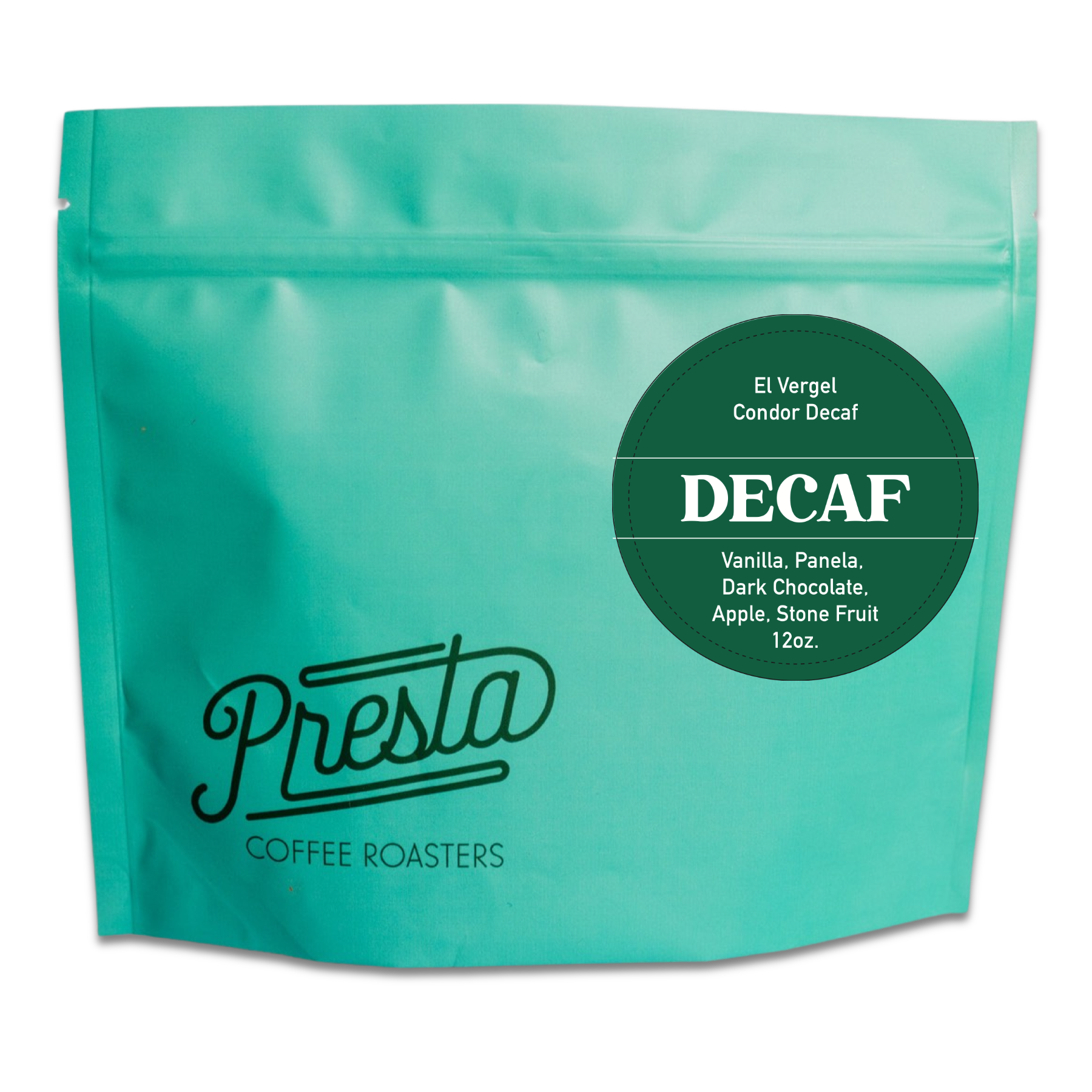
Decaf - Colombia - El Vergel
Origin: Colombia
Region: Tolima
Elevation: 1500 MASL
Farm/Farmer: El Vergel Estate, Elias & Shady Bayter
Varietal: Red & Yellow Caturra
Decaffeination Process: Ethel Acetate
Tasting Notes: Vanilla, Panella, Dark Chocolate, Apple, Stone Fruit
We have been sourcing from the El Vergel Estate for a few years, and what began as an avocado farm in 1995, started by the parents of Elias and Shady Bayter, has become so much more. After disease severely affected the avocado crop in 2006, their mother, Martha, decided to diversify and plant a few varieties of coffee tree. Initially planting Catimore, Red Caturra, and Yellow Caturra, the desire for knowledge came next. Learning about coffee processing equipment, methods, and how to establish El Vergel in the Colombia specialty coffee scene. Around 10 years later, At the recommendation of Miguel Jimenez, they began to plant Geisha, Java, Pacamara, and Red Bourbon, releasing the first harvest from these premium varieties in 2017. Since then the farm has modernized, creating an environment for the Bayter family to push the boundaries of coffee processing, from introducing Natural processing on the estate in 2018, to learning more about aerobic and anaerobic fermentation, and developing the unique Koji processing method. Their continued research and experimentation with controlled fermentation will keep pushing the evolution of coffee, and we will keep bringing the coffee in to share with you.
This bean is decaffeinated using Ethel Acetate derived from sugar cane that is grown locally. Ethel Acetate is used because of its low boiling point so it can be easily flushed, and because it is a caffeine specific solvent. The green coffee is first steamed and soaked, causing it to swell up, enabling easier extraction of the caffeine. The beans are then soaked in the ethel acetate solvent, which attaches to the caffeine molecule, before a going through a second steam and soak, with clean water, to flush the caffeine and the solvent without affecting the coffee flavor as drastically as a repeated soaking method would (like the Swiss Water Process). Finally the beans are dried to a similar moisture content they had prior to the decaffeination process.
